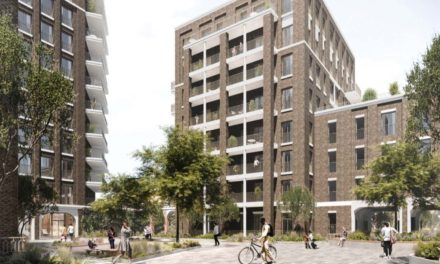What do the London Local Elections mean for planning and development? By Adam Hardy, Senior Account Executive, DevComms.
With the dust settled, campaigners rested, and newly elected councillors sworn in, what do the London election results really mean for those in the development industry?
The Friday morning headlines after the May 2022 Local Elections focused on Labour’s three big wins in the capital: Westminster, Wandsworth, and Barnet. These are certainly headline results at totemic Tory councils, including the oft quoted ‘Thatcher’s favourite council’ (Wandsworth). Labour benefitted from the overnight count of these three elections, allowing them to claim electoral victory for the Friday morning headlines. However, with further results coming in over the weekend, the overall picture was more nuanced with Labour losing control in Croydon, Tower Hamlets, and Harrow. What do these significant changes mean for development and planning across London?
Westminster
At the Conservative stronghold of Westminster, Labour made unexpected gains in wards such as Hyde Park and Lancaster Gate to win 12 seats and take control of the Council for the first time in its near 60-year history.
In the lead up to the elections, the Labour Group criticised the transparency of the Conservative administration and its ‘cosy’ relationship with developers. To combat this, the Labour Group want to promote resident-led development. Numerous aims for planning and development were listed in their manifesto, including prioritising affordable homes, zero-carbon developments, gentle density, and high quality design, as well as stronger protection for pubs, music venues and theatres.
Proposed planning reforms, on the other hand, include a design panel to advise planning committees and a database of private developable land holdings and developments that have not proceeded.
Many have been quick to point out the role of the £6 million Marble Arch Mound project, launched under the Conservative administration and widely criticised, in the Labour win. ‘Resident-led’ the mound was not, and voters may have seen it as a symbol for the Council’s relationship with the public.
Cllr Geoff Barraclough, widely expected to take on the responsibility for planning reform, has been confirmed as the new Cabinet Member for Business and Planning and attention will now shift to understand exactly what measures will be brought in to deliver the numerous planning related manifesto commitments.
This victory allowed Labour Leader Keir Starmer to point out in the House of Commons, with great enthusiasm, that Boris Johnson will now be the first prime-minister to be a resident of a Labour Council.
Wandsworth
It was a similar story south of the river at Wandsworth, where Labour gained control for the first time since the 70s. While an important symbolic win, this victory was not all too unexpected with Labour having wrestled control over all of the parliamentary seats in the years up to this election. In their manifesto the Labour group promised to build 1,000 new council homes and set a 50 per cent affordable homes target on new developments. Both Labour and Conservative Groups campaigned on low council tax, with the new Labour Administration pledging to direct spending at helping vulnerable groups.
However, national politics had a large part to play in converting Conservative voters. Labour Group Leader Simon Hogg stated that ‘Partygate is still a huge issue for people’ in the borough, and that nailed-on Conservative voters in areas such as Putney intended to send a ‘message’ to Boris Johnson by voting Labour.
Barnet
The other major Conservative loss in London was Barnet, where Labour managed a 41 councillor tally, representing a significant majority. Ex-Conservative Leader Daniel Thomas put the result down to voter apathy. By contrast, Labour leader Barry Rawlings cited a familiar story of voters feeling ‘neglected’ by the Council and ‘alienated from the Boris Johnson government.’
As in Wandsworth, the Labour Administration has pledged to keep council tax low and deliver 1,000 new council homes. However, they have also focused on fighting unpopular tower blocks and controlling building height and density. The Labour manifesto even cited the campaign group Create Streets, who promote beautiful developments and gentle density.
Croydon
The headline win for the Conservatives in London was in Croydon, where Conservative Jason Perry narrowly won the new position of directly elected mayor. After several years of financial troubles, some voters may have felt that a significant change was required at the very top of the Council. Croydon stands out as the biggest loss for Labour in London but can be seen as an anomaly due to its tarnished financial record.
Complicating matters for the new Mayor is the fact that the Council is now under no overall control with 34 Labour members and 32 Conservative members, with a by-election on the horizon given Mayor Perry is unable to take up the council seat he was just elected for. Labour seats were snapped up by 2 Green candidates and a Liberal Democrat candidate, who may be able to work with the Labour Group in an opposition coalition.
It remains to be seen how much Jason Perry will be able to get done in his time in office; some of his key housing and planning aims, for instance, involve removing the design guide and intensification zones. Mr Perry will nevertheless be able to appoint a Cabinet and given that budgets and policies require a rejection by a two thirds majority of councillors, it is likely he will be able to push through significant change. However, expect lots of political wrangling and opposition to key issues to be regularly aired in public, inevitably slowing down the process.
Tower Hamlets
In Tower Hamlets, former Mayor Luftur Rahman, notoriously banned from office for 5 years in 2015, convincingly beat Labour’s John Biggs in the mayoral campaign. Mr Rahman was standing for his newly established Aspire Party, which also gained control from Labour by winning 24 seats.
A key part of Lutfur Rahman’s manifesto was social housing. The new Mayor wants to build ‘a minimum of 4,000 social homes for rent over the next four years, with a focus on 3–4-bedroom homes.’ Mr Rahman also aims to improve the quality of housing by working with social and private landlords, tackling overcrowding, and adapting homes for those with disabilities. Given the history of the borough, as well as the personal history of Mayor Rahman himself, it is fair to say that everybody, the LGA, GLA and government itself will be keeping an extremely close eye on the operation of the council.
With many council AGMs taking place this week, new leadership teams and Cabinet portfolios will be coming to the fore. At this stage, it should be noted that even in councils which did not change hands, it has already been confirmed that there will be a number of new Leaders taking the reins across London Councils. As they seek to establish themselves, and build their experience in leadership positions, it is vital that the development industry builds its knowledge on the shifting priorities moving forward and starts to engage with the new postholders. New Leaders are already confirmed for Hounslow, Greenwich and Merton council amongst others.
Please get in touch with Pavitar K Mann, Director and Head of the London Team at DevComms if you would like a briefing on any London borough.
A chart with a slider showing the changes in London can be found here.
© London West (powered by ukpropertyforums.com).
Sign up to receive your free bi-weekly London West journal here














